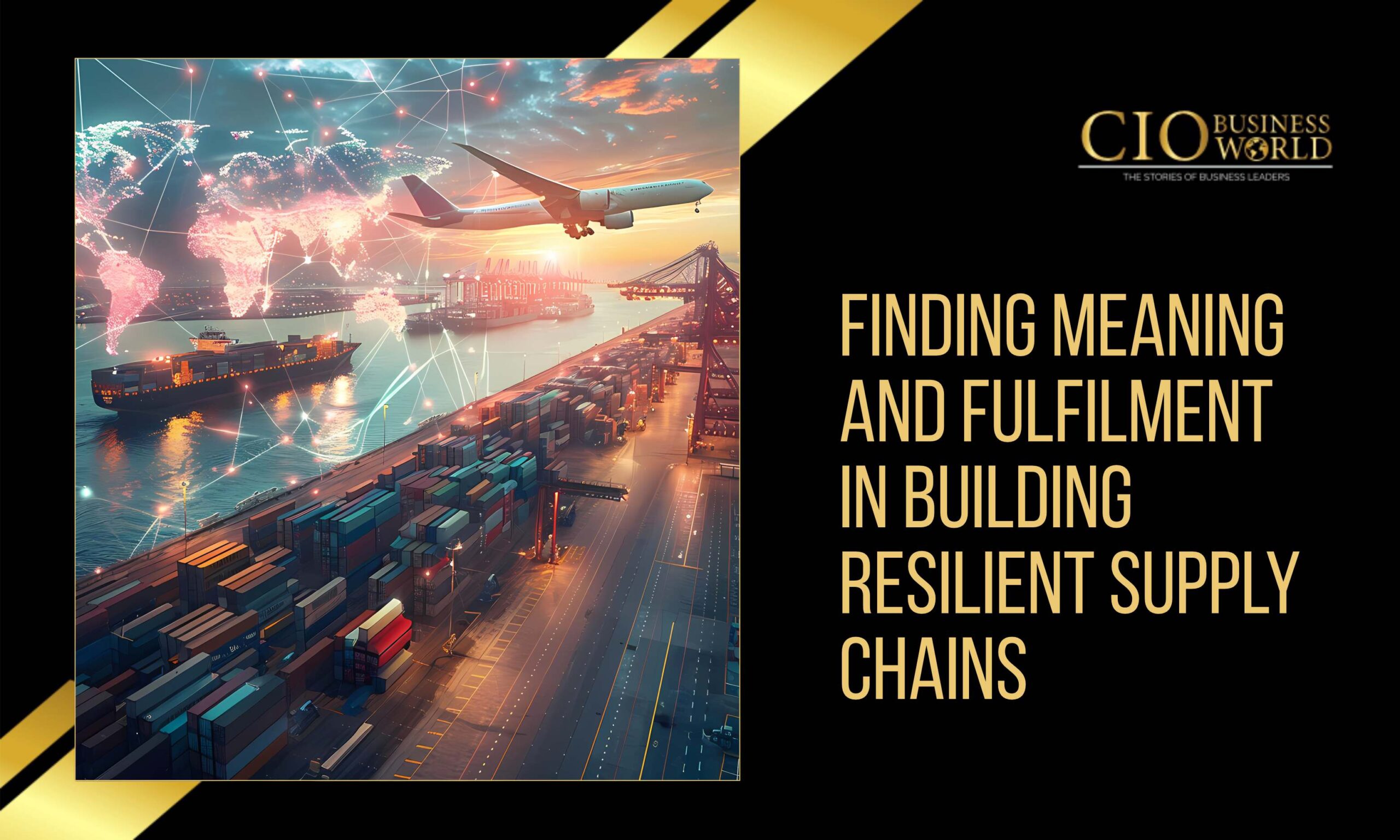In a world marked by uncertainty and rapid change, building resilient supply chains has become more than a business imperative, it is a calling that offers deep meaning and fulfilment for those who approach the work with their whole heart. The journey to resilience is not just about weathering disruptions; it is about creating systems that serve communities, support employees, and drive positive societal impact. When supply chain professionals work with purpose and commitment, they become stewards of trust, innovation, and progress.
The Heart of Resilience: Purpose Beyond Profit
Modern supply chains are evolving from profit-centric operations to purpose-driven engines of value. According to a global Gartner survey, 85% of supply chain leaders believe that the primary priority of enterprise purpose is to connect the customer through product offerings while delivering a positive societal and environmental impact. This shift means that every decision from sourcing materials to delivering products carries the weight of responsibility and the opportunity for impact.
Purpose-driven supply chains require visible executive commitment. Leaders must embed purpose into strategy, decision-making, and metrics, ensuring authenticity and building trust among employees and stakeholders. When teams understand the “why” behind their work, they are more engaged, innovative, and resilient in the face of challenges.
Building Resilience by Design
Resilient supply chains are not accidental; they are built by design, tailored to the unique needs of each organization. The foundation of resilience lies in agility the ability to anticipate, resist, and bounce back from unexpected events, whether it’s a natural disaster, a pandemic, or a sudden shift in demand. This agility is achieved through a combination of strategies:
- Distributing Inventory: Spreading inventory across multiple locations reduces risk and ensures continuity even if one warehouse faces disruption. This approach not only speeds up delivery but also keeps customer trust intact during crises.
- End-to-End Visibility: Leveraging technology and data to track products throughout the supply chain enables proactive planning and quick response to disruptions.
- Collaboration and Partnerships: Aligning with partners who share your values amplifies resilience. Collaborative ecosystems foster innovation and shared value, making the entire network stronger.
Fulfilling Work: Connecting People and Communities
Supply chain roles are uniquely positioned to make a positive difference in the world. Every day, supply chain professionals connect people ensuring essential goods reach those in need, supporting local economies, and responding to crises with speed and compassion. The sense of fulfilment comes from knowing that your work matters, that it touches lives beyond the balance sheet.
The industry’s evolution towards conscious logistics and holistic management reflects a growing recognition of this impact. Leaders now prioritize customer experience, sustainability, and ethical sourcing, understanding that true value is created when people, processes, and technology work in harmony. This holistic approach not only enhances efficiency but also drives sustainable growth and customer satisfaction.
The Power of Whole-Hearted Leadership
Building resilient supply chains demands more than technical expertise it requires heart. Leaders who approach their work with empathy and integrity inspire teams to go the extra mile. They foster cultures of flexibility, continuous learning, and open communication, empowering employees to contribute ideas and take ownership of outcomes.
Employee engagement is vital. When people feel included, heard, and valued, they are more likely to buy into the organization’s purpose and give their best effort. Purpose-driven cultures are built through autonomy, decision-making principles, and opportunities for innovation and growth.
Lessons from Disruption: Adaptation and Meaning
The COVID-19 pandemic underscored the necessity of resilience, and the meaning found in overcoming adversity. Companies that thrived were those that adapted quickly, invested in technology, and reinforced their cultural foundations. They moved from simply tracking disruptions to proactive planning for them, combining data-driven insights with human judgment and intuition.
This period also revealed that resilience is not just about bouncing back, it’s about bouncing forward. It’s about using every challenge as a catalyst for improvement, learning, and deeper connection to purpose.
Fulfilment Through Service
At its core, supply chain work is service. It is about meeting needs, solving problems, and making life better for others. The fulfilment comes from knowing that every effort every late night, every creative solution, contributes to a larger mission. Whether it’s ensuring a life-saving medicine reaches a remote village or helping a small business scale, the impact is real and lasting.
Conclusion: Resilience as a Journey of the Heart
Building resilient supply chains is a journey that demands intellect, adaptability, and most importantly heart. It is in this work, done with whole-hearted dedication, that professionals find true meaning and fulfilment. By aligning profit with purpose, fostering collaboration, and serving with empathy, supply chain leaders and teams can create systems that not only withstand disruption but also build a better world for all.
In the end, resilience is not just a business strategy, it is a testament to the power of working with your whole heart.







